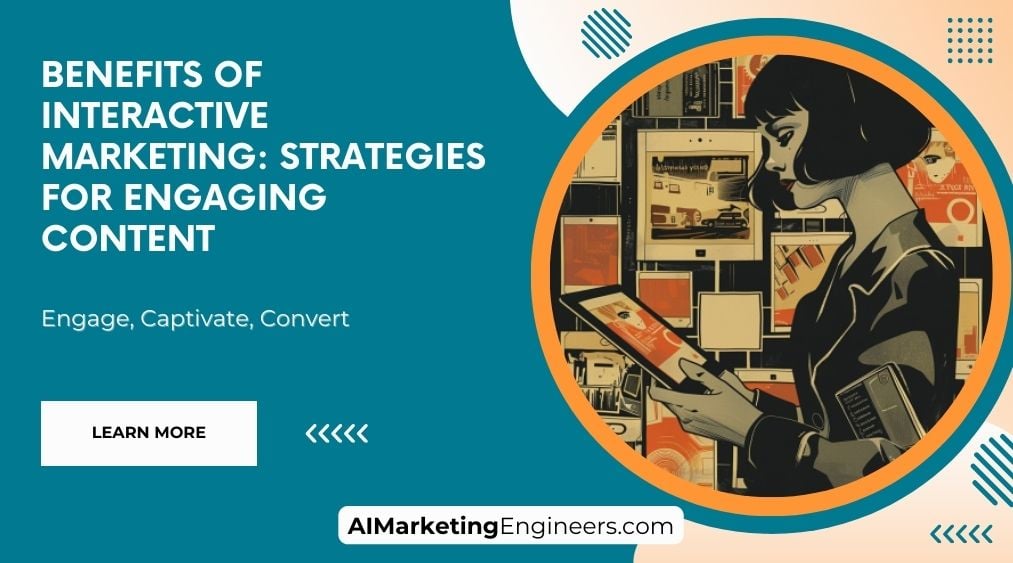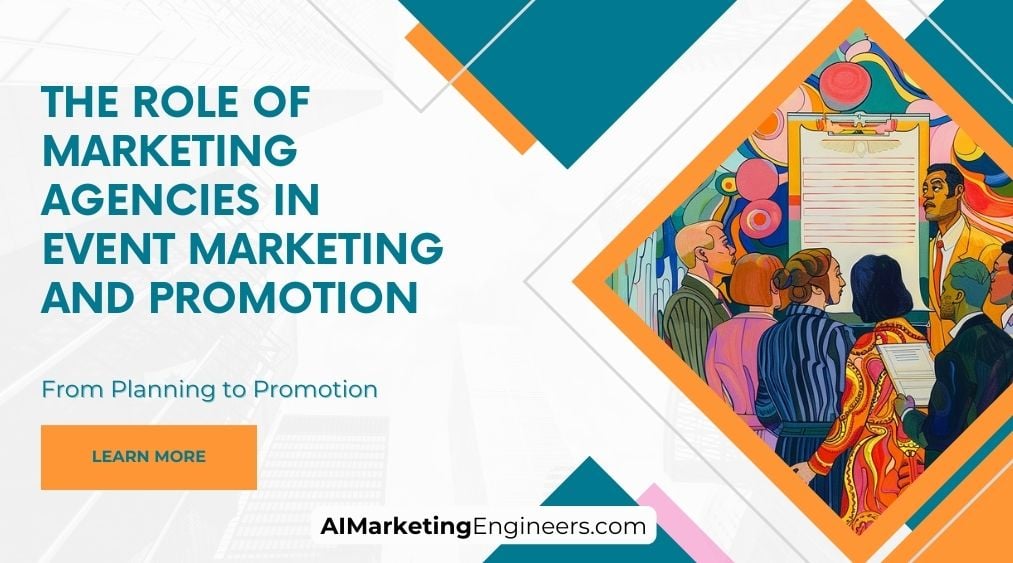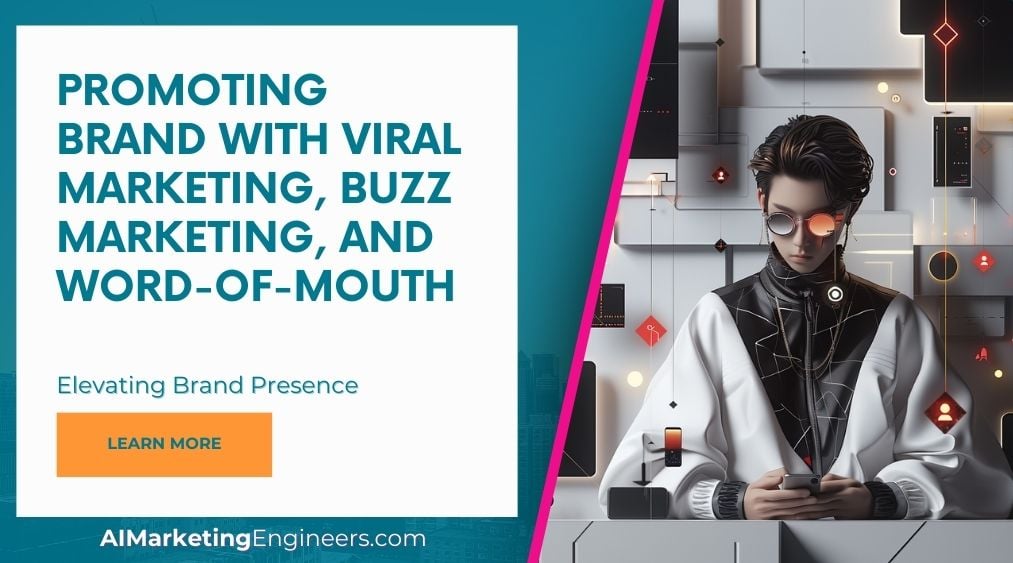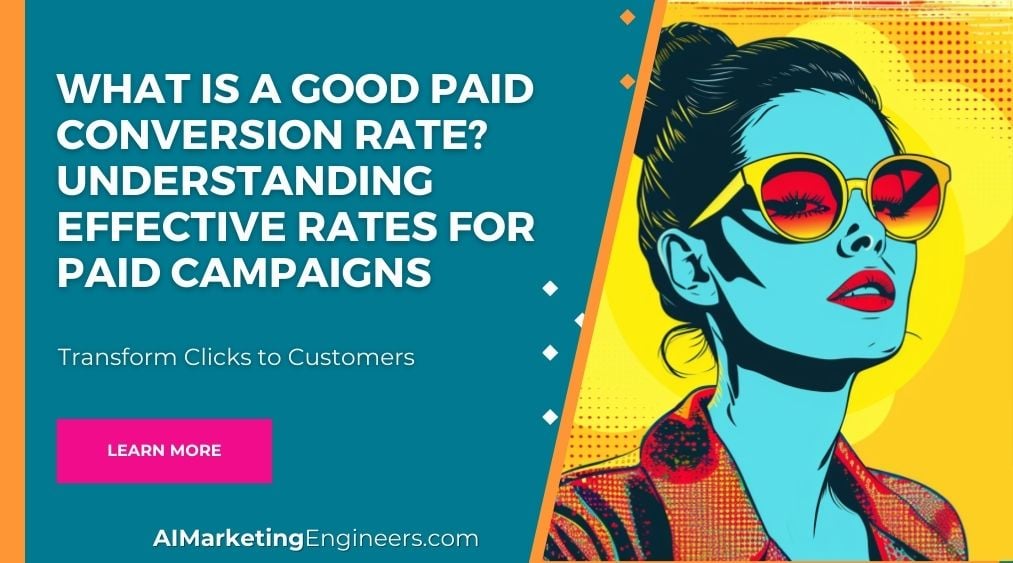Key Takeaways
✅ Enhanced Customer Engagement: Interactive marketing shines by turning content into an experience. Take, for example, quizzes and interactive videos, which not only entertain but can boost user involvement by up to 88%. Isn't that a staggering way to keep your audience glued to your brand?
✅ Personalization and Data Collection: With every click and interaction, learn about your customers' preferences. This information is gold, paving the way to tailor-made experiences that can spike up conversion rates by nearly 8%. Imagine crafting a marketing campaign that feels like a one-on-one conversation with each customer.
✅ Increased Brand Awareness and Shareability: Make your content go viral! Interactive elements can turn viewers into ambassadors, sharing their experience and potentially increasing your content's reach by 20%. Imagine your brand buzzing in conversations far and wide, all thanks to content that's too good not to share.
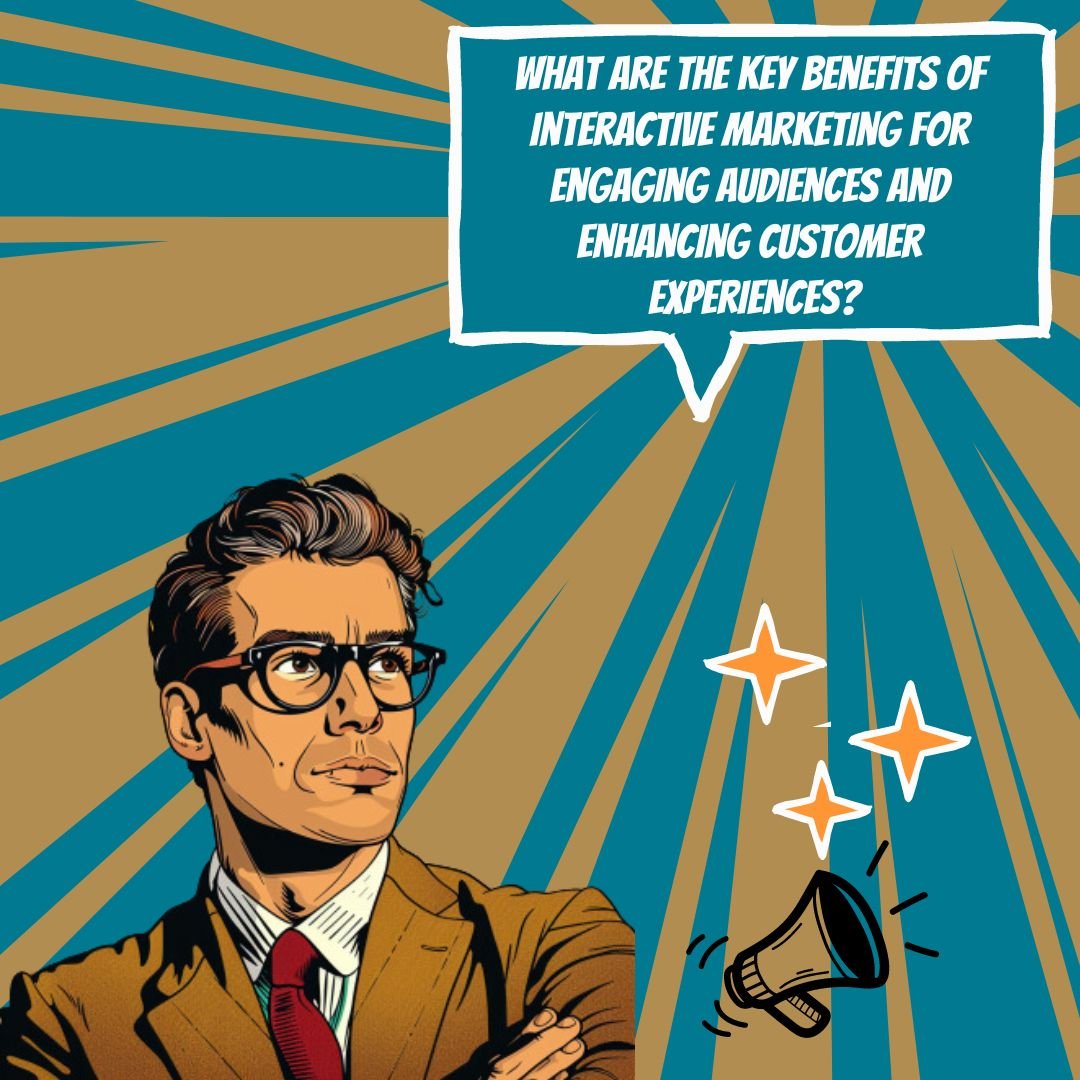
Introduction
Are you tired of shouting into the void with static content and getting nothing but crickets in response? Interactive marketing can turn that around. The power of engagement is no joke – it can transform passive viewers into active participants. With everyone vying for attention online, how can you make your brand not just seen but heard, remembered, and cherished? That's where Interactive Marketing: Strategies for Engaging Content comes into play.
This article will guide you through a spectrum of modern strategies – from gamification to immersive AR/VR experiences – that can give your brand awareness a massive boost and solidify customer loyalty like never before. If you're looking to maximize your revenue, ROAS, or ROI, these insights are your golden ticket. With actionable tips and real-world examples, you're about to discover the secrets to not only capture attention but to also convert it into tangible results. Stick around; the future of marketing awaits.

Top Statistics
| Statistic | Insight |
|---|---|
| Interactive Content Conversions: Generates 2x more conversions than passive content. (Source: DemandGen Report, 2019) | Doubling down on engagement can lead to a parallel rise in conversions—showing how much impact the right approach to content can have. |
| Marketer Agreement: 93% think that interactive content is effective in educating the buyer. (Source: Content Marketing Institute, 2019) | Educating a potential customer not only informs them but also builds trust, setting the groundwork for a lasting relationship. |
| Repeat Visits: 79% of marketers say interactive content results in repeat visitors and multiple exposures. (Source: SnapApp, 2019) | When content grabs attention, people are likely to come back for more—making for a loyal audience and potential repeat customers. |
| Consumer Preference: 70% prefer getting to know a company through articles over ads. (Source: Content Marketing Institute, 2019) | It's not just about making a sale—it's about making a connection, and articles give companies the runway they need to tell their story and build relationships. |
| Future Plans: 66% of marketers plan to increase their use of interactive content in the next 12 months. (Source: Content Budget Marketing Institute, 2019) | Recognizing the wave of the future, the majority of marketers are investing more in interactive content, signaling its growing importance. |
The Rise of Interactive Marketing
Interactive marketing has transformed how brands connect with their audiences. It's not just about shouting your message into the void and hoping someone hears; it's a two-way street. In the current digital landscape, where everyone is vying for attention, interactive marketing stands out by not just reaching the audience but by engaging them. Imagine the difference between someone who talks at you and someone who talks with you – which conversation are you more likely to remember?
Benefits of Interactive Marketing
Implementing interactive marketing brings a slew of benefits. It's not just a flashy tool; it's a means to foster a more meaningful relationship with your audience. One of the biggest advantages is enhanced customer engagement. When customers interact with your content, they're more likely to stick around, and that retention can convert to increased brand loyalty over time. From a numbers standpoint, businesses using interactive content see an uplift in conversion rates and a better return on investment (ROI). Plus, every interaction feeds you data, offering insights into customer preferences and behavior which are crucial for personalization efforts.
Strategies for Creating Interactive Content
So how do you capture that engagement? Simple: Make content that invites participation. Gamification is a proven strategy; it turns the mundane into fun by incorporating games or challenges. Whether it's a points system, badges, or a competition, who doesn't love the thrill of a game? Then there are quizzes and surveys, simple yet powerful tools for soliciting opinions while providing a platform for users to express themselves. And let's not forget interactive videos – these aren’t just for watching; users can click, drag, and interact, turning passive viewing into an active experience. For those looking to really wow their audience, augmented reality (AR) and virtual reality (VR) can provide immersive experiences that transport customers to another world – or bring products right into their living room.

AI Marketing Engineers Recommendation
Recommendation 1: Leverage User-Generated Content to Boost Engagement: Studies show that 93% of marketers agree that consumers trust content created by customers more than content created by brands (TurnTo, 2021). By encouraging customer reviews, photos, and videos of your product or service, you can create an authentic and interactive experience. Not only does this enhance credibility, but it also increases the likelihood of your audience engaging with your content, leading to higher conversion rates.
Recommendation 2: Implement Interactive Storytelling Through AR/VR: Statistics indicate that the augmented reality (AR) and virtual reality (VR) market is expected to reach $209.2 billion by 2022 (Statista, 2021). Embrace this trend by incorporating AR and VR elements into your marketing strategies to create immersive stories about your products or services. This will not only entertain and engage your audience but also elevate the user experience, making your brand memorable.
Recommendation 3: Maximize Engagement With Personalized Quizzes and Polls: Personalization is key in today's market, with 80% of shoppers more likely to buy from a company that offers personalized experiences (Epsilon, 2020). Integrate interactive quizzes and polls that adapt to user responses. Tools like Outgrow and Typeform allow you to customize this content, helping you collect valuable data on customer preferences while significantly enhancing user engagement.
Relevant Links
- Unleash Your Brand's Potential on WeChat
- Dominate Douyin & Kuaishou: The Ultimate Strategy
- Master Video Marketing in South Korea's Dynamic Landscape
- Win the SEO Battle in South Korea's Online Retail Space
- Stay Ahead: Understand China's Evolving Consumer Behavior
Conclusion
As we wrap up our exploration into the dynamic world of interactive marketing, it's clear that this isn't just a fleeting trend – it's a transformative shift in how brands connect with their audience. The lines between consumer and content creator are blurring, with engaging content at the forefront of successful marketing strategies. The benefits of interactive marketing are numerous: enhanced engagement, increased brand loyalty, more precise data collection, personalization, and ultimately, a stronger return on investment.
But how do we harness these benefits in practical terms? To engage customers in this noisy digital era, brands must offer content that is easy to interact with and rewards their participation – whether that's through games, challenges, quizzes, or immersive AR and VR experiences. And as we've seen with the success stories, simplicity, value, and mobile optimization are the cornerstone practices that can make or break an interactive campaign.
Let's not forget the importance of monitoring and analytics – they're the compass that guides the ship. Keeping a close eye on what works allows brands to continuously refine their strategies and stay ahead of the curve. So, what's next for interactive marketing? As technology evolves, so will the ways in which we engage with our audience. Brands that are quick to adapt and innovate will not only survive but thrive in the future of marketing.
The horizon of interactive marketing is expanding, and the opportunity for brands to build meaningful connections with their audience is greater than ever. Are you ready to embrace these strategies and set your brand apart? The future is interactive, and the time to act is now.

FAQs
Question 1: What is Interactive Marketing?
Answer: Interactive Marketing is that friendly chat you have over digital channels with your audience. It’s where you create conversations through your content and make sure that both you and your audience are active participants. It’s all about listening, responding, and getting to know each other better.
Question 2: Why is Interactive Marketing important?
Answer: It’s all about connection, right? Interactive Marketing helps you build a relationship with your audience that feels personal and genuine. It’s like making a new friend – the better you get to know them, the more you enjoy their company. And for a brand, that means customers who trust you, stick around longer, and really get involved with what you're all about.
Question 3: What are the benefits of Interactive Marketing?
Answer: Imagine a party where everyone's chatting, laughing, and sharing stories – that's what Interactive Marketing can do for your brand. It brings a host of goodies: better customer engagement and loyalty, a shining reputation, and insight into what makes your customers tick, which can lead to more sales down the line.
Question 4: What are some examples of Interactive Marketing strategies?
Answer: There’s a whole toy box full of strategies to play with. You can get people talking with contests on social media, learn about their likes with engaging surveys, bring experiences to life with AR and VR, and even tell stories that they won't stop talking about.
Question 5: How can I measure the success of my Interactive Marketing campaigns?
Answer: Success is when you throw a party, and people show up, stay, and have a great time. In the Interactive Marketing world, that means looking at likes, shares, and comments, seeing if those conversations are turning into sales, and whether people come back for more.
Question 6: What are some best practices for creating engaging Interactive Marketing content?
Answer: To keep the convo going, really listen to your audience and give them content they truly care about. Mix in rewards for joining in, keep things fresh and on-point, and captivate them with stories and visuals. And don't forget, make it super easy for them to share their thoughts!
Question 7: How can I integrate Interactive Marketing into my existing marketing strategy?
Answer: It's about finding those moments when you can turn a monologue into a dialogue. Add some interactive goodness to your site, social media, and emails. Team up with your colleagues to cook up some fresh ideas, and use what you know about your audience to personalize their experience.
Question 8: What are some advanced Interactive Marketing tactics for experienced professionals?
Answer: If you're ready for the next level, consider chatbots that are amazingly human-like, dive into immersive virtual worlds, create videos that truly involve your viewers, and forge partnerships that amplify your brand's voice. And hey, always keep data in your toolkit to make sure you're hitting the mark.
Question 9: What are some common mistakes to avoid in Interactive Marketing?
Answer: Watch out for a few pitfalls like not really getting who your audience is and what they want, relying too much on robots, not guiding people on what to do next, being way too salesy, and not paying attention to the feedback you're getting.
Question 10: What resources can I consume to learn more about Interactive Marketing strategies?
Answer: To keep growing your knowledge, check out industry blogs, join webinars, read case studies, mingle on social media, and attend events. Keep learning and stay curious – it's the secret sauce to becoming a pro at Interactive Marketing.

Academic References
- Schmitt, B. H. (1999). Interactive Marketing: The Future Present Way to Market. Journal of Marketing, 63, 111-135. In this trailblazing article, Bernd H. Schmitt lays the foundation of interactive marketing, explaining how this approach revolutionizes customer engagement through personalized experiences that foster loyalty.
- Lin, H.-H., et al. (2013). The Impact of Interactive Marketing on Customer Engagement and Purchase Intention: The Mediating Role of Brand Attitude. Journal of Business Research, 66(9), 1593-1600. This study delves into interactive marketing's effect on customer engagement and subsequent purchase intentions, revealing the key role played by the consumers’ perception of a brand.
- Fındıklıoğlu, A. F., et al. (2016). Interactive Marketing: Exploring the Effects of Participation on Customer Engagement and Purchase Intention. Journal of Interactive Marketing, 36, 37-50. The research uncovers the positive outcomes of customer participation in interactive marketing activities, highlighting the strategic importance of encouraging such engagement for marketers.
- Eaton, M. T. (2012). Interactive Marketing: A Practical Guide to Implementing Strategies and Tactics. In this handbook for practitioners, Michael T. Eaton shares actionable insights on crafting content for interactive marketing, the use of social media, and the necessity for personalizing customer interactions.
- Smith, T. M. (2017). The Power of Interactive Marketing: Real-Time Strategies to Engage and Captivate Your Audience. Smith's work serves as a guide to mastering interactive marketing by creating content that not only draws attention but also engages audiences in meaningful conversations, underpinning the growing importance of data-driven customer personalization.
